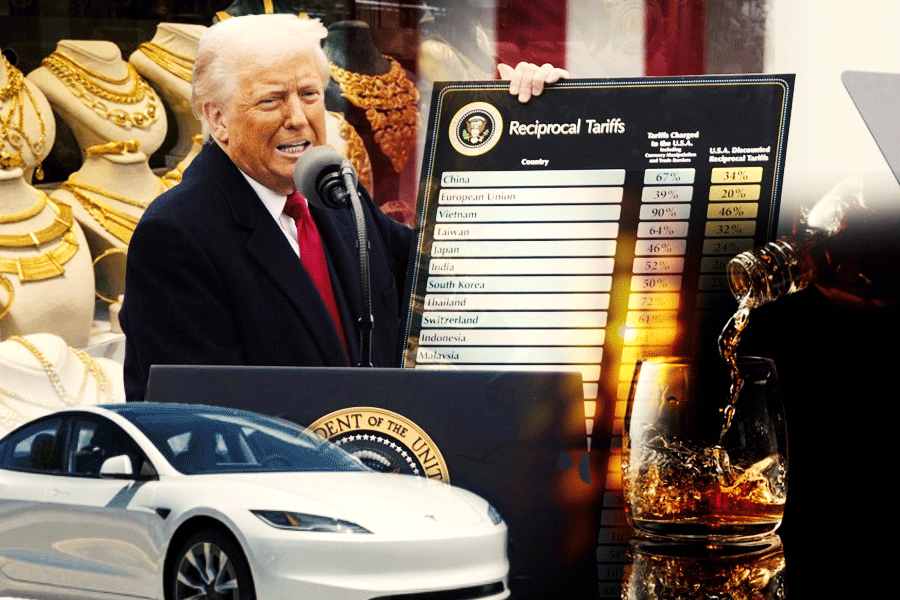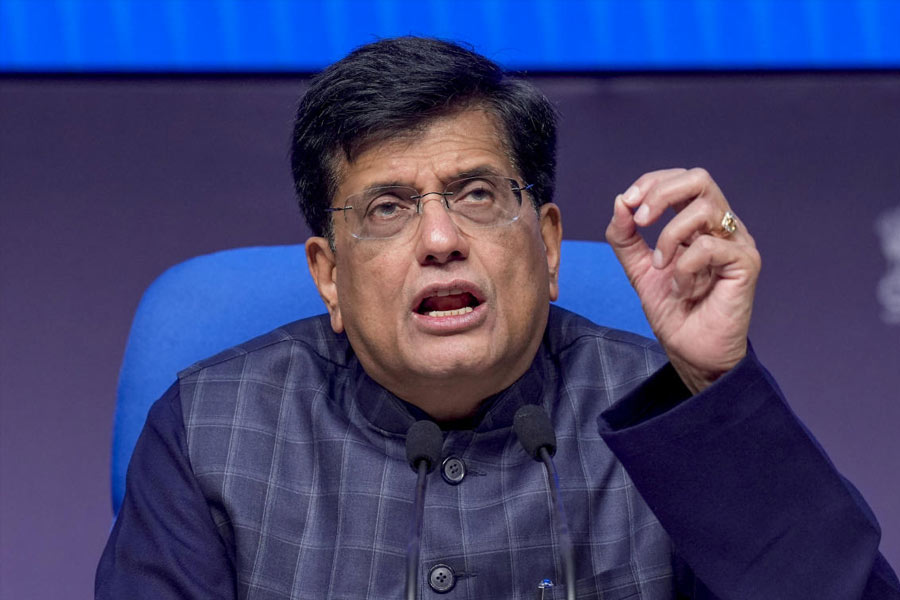US President Donald Trump Thursday morning announced reciprocal tariffs, with a 27 per cent levy on all goods imported from India. Announced during his ‘Liberation Day’ address, the move comes as a setback for New Delhi, which had been hoping for tariff concessions rather than new trade barriers.
Trump also termed India as a “tariff king” and “tariff abuser”.
India's exports to the US span 30 sectors, with six in agriculture and 24 in industry. And here’s a look at the Indian sectors and products most vulnerable to these tariffs.
Textiles and apparel
The textile and apparel industry of India stands as one of the most exposed sectors to the new US tariffs. The tariffs are likely to make Indian products more expensive and less competitive.
EY India partner and retail tax leader Paresh Parekh said it appeared "advantage India" for the Indian textile sector.
"India competes globally for textile exports with countries like Bangladesh, Vietnam, Cambodia, Sri Lanka, China, Pakistan, etc.
"As compared to around 27 per cent tariff for Indian imports, these countries have been hit harder by USA tariffs: Bangladesh at 37 per cent, Vietnam at 46 per cent, Cambodia at 49 per cent, Pakistan at 29 per cent, China at 54 per cent, Sri Lanka at 44 per cent, etc," he said.
The US buys textiles worth over USD 36 billion from India.
Automakers
Trump announced a 25 per cent tariff on vehicles not assembled in the US, effective April 3. This new tariff will apply to all cars made outside the US, including those built in Canada and Mexico, likely leading to significant price increases.
The tariff will apply to imported passenger vehicles -- sedans, SUVs, crossovers, minivans, cargo vans -- and light trucks, as well as critical auto parts, engines, transmissions, powertrain components, and key electrical parts.
"With US automotive tariffs rising, India's electric vehicle sector has a prime opportunity to capture a larger share of the US market, especially in the budget car segment," EY partner & automotive tax leader Saurabh Agarwal said.
India's largest export items to the US are engine components, power trains and transmissions.
Agriculture and seafood
According to an analysis of the think tank Global Trade Research Initiative (GTRI), the hardest-hit sector in agriculture would be fish, meat, and processed seafood, with $2.58 billion in exports in 2024, facing a 27.83% tariff differential.
The US is a major destination for Indian shrimp and other seafood products. Tariffs could increase prices, making Indian seafood less competitive compared to products from other exporting nations.
"Already our exports have anti-dumping and countervailing duties in the US. The additional hike in tariffs will make us uncompetitive. Out of India's total shrimp exports, we ship 40 per cent to America," Kolkata-based seafood exporter and MD of Megaa Moda Yogesh Gupta said.
Liquor, dairy and sugar
India's processed food, sugar, and cocoa exports may also face the heat as the tariff gap is 24.99 per cent. Its exports stood at USD 1.03 billion last year.
Cereals, vegetables, fruits, and spices (USD 1.91 billion shipments) have a tariff differential of 5.72 per cent between.
Dairy products, with exports worth USD 181.49 million, could be "severely" affected by a 38.23 per cent differential, "making ghee, butter, and milk powder costlier and reducing their market share in the US," GTRI Founder Ajay Srivastava said.
The other products which can be affected include edible oils (USD 199.75 million exports and 10.67 duty gap); alcohol, wines, and spirits (USD 19.2 million exports and 122.10 per cent tariff differential); live animals and animal products (USD 10.3 million exports and 27.75 per cent gap).
Diamonds and golds
The US is one of India’s largest jewellery export markets, accounting for almost 30 per cent of the share. Indian jewellery exports to the US are over $11 billion per year.
The gems and jewellery sector will be one of the most affected since import tariffs may be up to 20 per cent from the current zero per cent on loose diamonds and 5.5-7 per cent on gold jewellery, industry officials said.
The tariff hike has come at a time when gold prices rose further to cross the $3,200-mark in the international market. In India, gold price has crossed the Rs 90,000-mark per 10 gm.
Footwear
The footwear industry, with exports worth $457.66 million to the U.S., faces a tariff gap of 15.56 per cent. This substantial tariff could make Indian footwear more expensive in the US market, leading consumers to opt for alternatives from other countries, thereby impacting Indian manufacturers and exporters.
Other Asian economies have been hit even harder, with a 34 per cent reciprocal tax on China, Japan's exports to US will attract 24 per cent, Thailand 36 per cent, Bangladesh 37 per cent, Malaysia 24 per cent, Taiwan at 32 per cent, South Korea at 25 per cent and Vietnam will attract 46 per cent, one of the highest. These higher tariff rates could create new trade opportunities for Indian exporters.
Countries impose tariffs to make imported goods more expensive, which, in turn, encourage domestic manufacturing and job creation, a goal Donald Trump claims to achieve by his actions.
But higher import duties can be inflationary, making raw materials or components more expensive for domestic industries. If a local auto manufacturer needs an imported component that isn’t produced locally, the tariff will increase the component's cost, making the final product more expensive for consumers.










